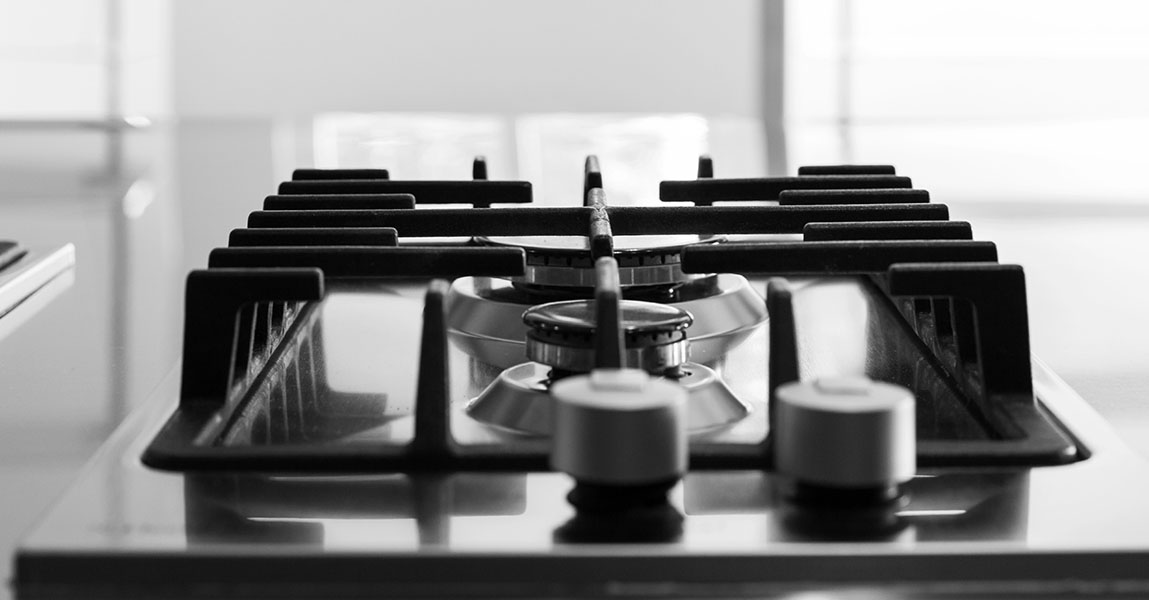Gas stoves are dependable when they work as expected. Yet, many of us have experienced the frustration of hearing the clicking sound without seeing a flame. This issue can be especially inconvenient when preparing meals in busy Burbank kitchens. We want to share practical reasons why burners behave this way and what steps we can take to solve the problem safely.
Understanding How Gas Burners Ignite
Every gas burner uses two main parts for ignition: the igniter and the gas flow. The clicking sound means the igniter is sparking, but that spark is not always enough. In some cases, the flame sensor might not detect the spark properly. This can lead to multiple clicks with no fire.
On the other hand, if gas does not reach the igniter at the right time, the spark has nothing to light. That is to say, the system depends on timing and clean connections. Our team at Quick & Pro Appliance Repair Burbank often sees this when stoves need a detailed cleaning. For those in the area, many look for appliance repair Burbank services when these problems persist.
Common Blockages in Burner Openings
Food spills and grease often cause the small openings in burners to clog. When this happens, gas cannot flow freely toward the igniter. We may hear repeated clicks but the flame does not appear. Cleaning these openings gently with a pin or brush can sometimes restore normal flow.
However, tough buildup may need more than a light scrub. In that case, soaking the burner heads in warm soapy water helps loosen residue. After that, drying them completely before placing them back is important. Otherwise, moisture can keep the spark from working as it should.
The Role of Igniters
Igniters create the spark, and they need to be clean and properly positioned. If dirt covers the tip, the spark weakens. Similarly, if the igniter is too far from the gas stream, the flame will not catch. We can usually clean the tip with a cotton swab and a little rubbing alcohol.
In some homes, igniters wear out after years of use. The part might still click but not release a strong spark. When that happens, replacement is often the best option. This is one of the most common problems we address when doing oven repair in Burbank.
Gas Supply and Pressure Issues
Sometimes the problem is not the burner itself but the supply of gas. If the valve is not fully open, the amount of gas may be too low for ignition. This can cause repeated clicking without any result. Checking that the knob and supply valve are fully open is a simple first step.
In other cases, pressure inside the line might not be steady. This happens during maintenance work in neighborhoods or when regulators fail. While we cannot solve larger supply issues ourselves, we can confirm whether the stove is receiving enough gas. When gas supply is steady but burners still fail, then the issue lies with the appliance.
Moisture Interference in Burners
Water from cleaning or cooking spills can interfere with ignition. If water seeps into the igniter or burner head, the spark might not jump correctly. That is why it is important to let burners dry fully after cleaning. Even a few drops left behind can delay ignition for hours.
We often suggest removing the burner cap and letting it air dry if clicking continues after cleaning. Placing the parts near sunlight can also help speed up drying. Once the moisture is gone, the burner usually lights as normal.
Electrical Connections Behind the Stove
The clicking sound itself comes from an electrical system. If wiring behind the stove becomes loose or damaged, the spark may be weak. In those cases, the clicking continues but the gas never lights. Repairing wiring is not something most of us should attempt without training, since mistakes can create safety risks.
This is why many homeowners contact professionals when the issue is more than surface-level. If our stove continues to click without ignition even after cleaning and drying, it may be time to contact us for a safe inspection.
Preventing Repeated Ignition Problems
Preventing these issues starts with small habits. Wiping up spills quickly keeps food from clogging the burner openings. Cleaning burner heads once a month helps maintain smooth gas flow. Ensuring burners are dry after cleaning prevents moisture problems.
We also recommend checking that igniter tips remain clean and in position. If parts look worn or corroded, arranging a replacement early avoids larger failures later. With these steps, most kitchens in Burbank can keep burners reliable and ready for cooking.
Extra Tip: Testing Burner Function Safely
A helpful method for testing burners after cleaning is lighting them with a match while turning the knob. If the burner lights with a match but not with the igniter, then the issue is electrical. If it still does not light, then the gas flow is blocked. This simple test helps us narrow down the cause quickly without extra guesswork.
FAQs
Why does my gas stove click even after the flame is on?
The igniter may keep sparking because it is dirty or wet. Cleaning and drying the igniter tip usually solves the issue.
Can I use my stove if the burner clicks but does not ignite?
It is not safe to keep trying for long. Unlit gas can build up in the air, so stopping and checking for blockages or moisture is best.
How often should I clean my stove burners?
Monthly cleaning is usually enough for regular cooking. If spills are frequent, cleaning should be done more often.
Is it dangerous if my igniter keeps clicking?
Yes, because the system may be releasing gas without ignition. Turning off the knob and letting the air clear before trying again is important.
When should I call for professional help?
If cleaning, drying, and checking the gas valve do not solve the problem, calling a repair service is the safest choice.

